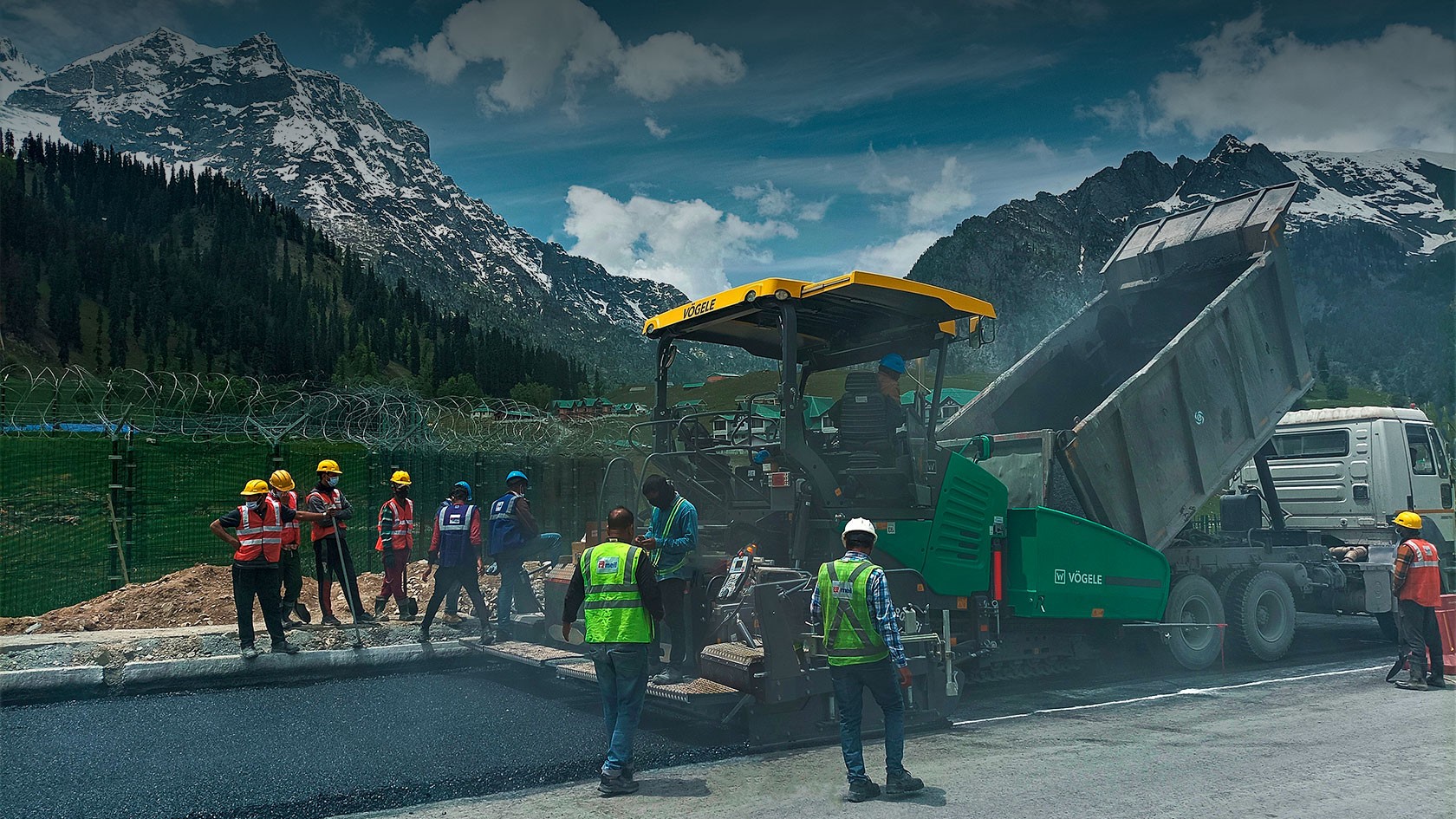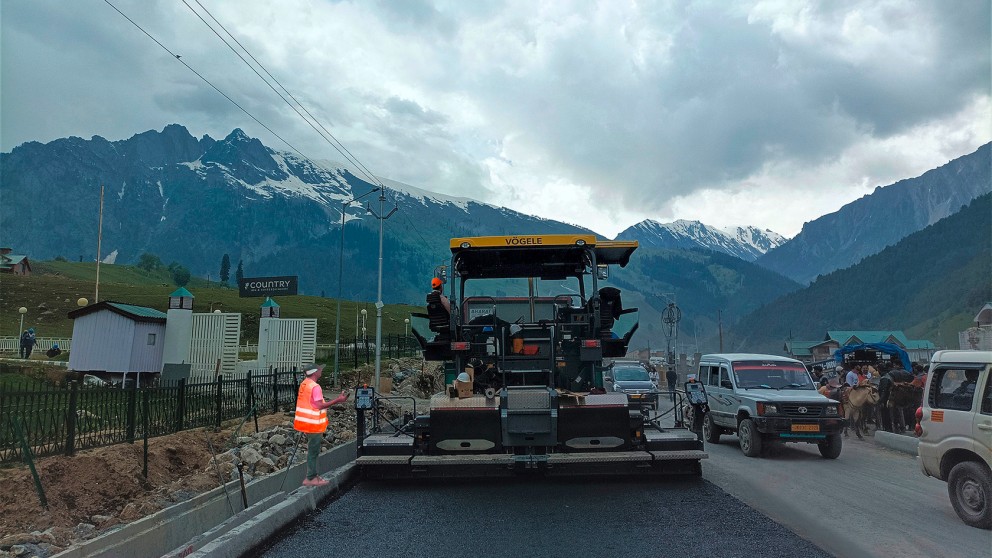- Project:
- Zoji-La Tunnel project
- Overall length:
- 32 km
- Paving outside the tunnel:
- 16.4 km
- Paving inside the tunnel:
- 15.5 km


Two Vögele pavers involved in the construction of the Zoji-La Tunnel in India.
A mission like no other: Deep in the inaccessible Himalayan mountains, at an altitude of more than 3,500 m, a SUPER 1400i and a SUPER 1800-3i from Vögele were involved in the construction of what is probably India’s most ambitious tunnelling project to date. The Zoji-La Tunnel, named after the mountain pass of the same name, provides a year-round, weather-independent connection between the regions of Ladakh and Kashmir and, at a length of approximately 13 km, is the longest road tunnel in Asia.
Ladakh | India: It takes more than three hours to cross the Zoji-La Pass – and between November and May, the route is completely impassable. During these months, heavy snowfall and avalanches make it impossible to cross the pass, meaning that the border region of Ladakh was previously dependent on air supplies for six months of the year. In light of this, the significance of the new tunnel for the local economy is all the greater, reducing as it does the journey time between Srinagar and Leh to only 15 minutes.
The asphalt work was carried out by one of the country’s largest infrastructure companies: Megha Engineering and Infrastructures Ltd. (MEIL), based in Hyderabad, is a global company specialising in projects in challenging environments.
For the paving work inside the tunnel, the company used the Universal Class paver SUPER 1400i from Vögele: Across a stretch of 15.5 km, the paving team laid a 6 m wide and 18 cm thick layer of dry lean concrete (DLC). To pave the section outside the tunnel, including access roads and bridges, that covered a length of 16.4 km at a width of 10.5 m, the company opted for another Universal Class paver, the SUPER 1800-3i with the AB 600 TV extending screed. As the most powerful tracked paver in its class, it covers a wide range of applications and impressively proved its worth even in the harsh geographical conditions of the Himalayas.
Operation under difficult geographical conditions and temperatures down to minus 10 degrees:
The powerful SUPER 1800-3i impressed the paving team with its outstanding paving capacity and consistently favourable paving results.
To ensure accurate paving profiles, the paving team took advantage of the Vögele Niveltronic Plus automatic levelling system when applying the three layers. The fully integrated system is tailored to the machine technology of the SUPER pavers and offers a convenient selection of sensors for every job site situation. A cross slope sensor and a height sensor were used in the rough terrain of the Zoji-La road construction project with its many bends, gradients, and inclines. The measured height on one side of the screed in combination with the cross slope gives rise to consistent, accurate paving profiles across the entire working width. This meant that the road level could be maintained at all times despite the numerous bends and curves.
India is one of the most important growth markets and is expanding its infrastructure with a large number of road construction projects. The Wirtgen Group has been present in the country for over 20 years with local sales and service centres and also has a production facility near Pune. Machine models are manufactured here that supplement the product portfolio of the German parent plants for the local market.
Press/media kit
Click here to download a ZIP file containing the press release in the available languages in Microsoft Word format and the images in 300 dpi resolution.
Download
